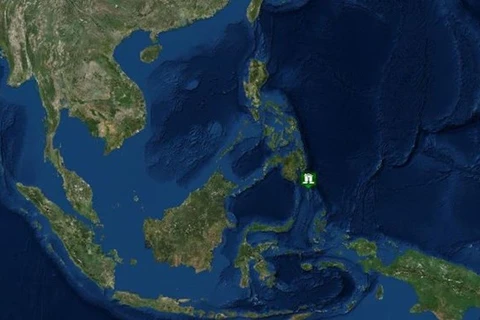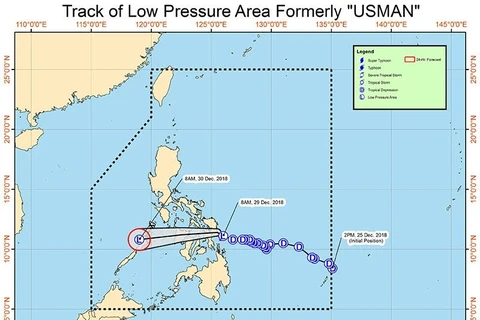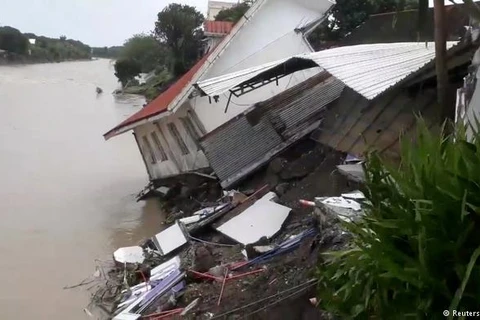Hanoi (VNA) – The death toll from heavy rains that triggered landslides and flash flooding in the Philippines rose to 122, said the Philippine National Disaster Risk Reduction and Management Council (NDRRMC) on January 3.
The NDRRMC said that 37 new deaths were reported in connection with the recent tropical depression. The victims were all from the worst-hit region of Bicol, which now has an overall total of 105 deaths. Officials said the deaths in the region were mostly caused by landslides, triggered by heavy rains.
Philippine President Rodrigo Duterte is scheduled to visit the Bicol region on January 4. Presidential spokesman Salvador Panelo said the President wants to see for himself the destruction brought about by the heavy rains and ensure that measures are being done to alleviate the plight of those affected by the storm.
NDRRMC Executive Director Ricardo Jalad has also attributed the high number of reported casualties from storm Usman to the failure of preemptive evacuation of residents living in risky areas amid warnings of heavy rains that may trigger flooding and landslides.
Usman swept through the central Philippine islands on December 29, bringing heavy rain that triggered landslides and flooding in the Bicol and eastern Visayas regions.
Damage to agriculture in Bicol, which produces rice and corn, was estimated at 342 million pesos (6.5 million USD).
Philippine officials put three provinces under a “state of calamity” to give them access to emergency funds.
About 20 tropical storms lash the Philippines each year, killing hundreds of people. The country’s deadliest storm on record is Super Typhoon Haiyan, which left more than 7,350 people dead or missing across the central Philippines in November 2013.–VNA
The NDRRMC said that 37 new deaths were reported in connection with the recent tropical depression. The victims were all from the worst-hit region of Bicol, which now has an overall total of 105 deaths. Officials said the deaths in the region were mostly caused by landslides, triggered by heavy rains.
Philippine President Rodrigo Duterte is scheduled to visit the Bicol region on January 4. Presidential spokesman Salvador Panelo said the President wants to see for himself the destruction brought about by the heavy rains and ensure that measures are being done to alleviate the plight of those affected by the storm.
NDRRMC Executive Director Ricardo Jalad has also attributed the high number of reported casualties from storm Usman to the failure of preemptive evacuation of residents living in risky areas amid warnings of heavy rains that may trigger flooding and landslides.
Usman swept through the central Philippine islands on December 29, bringing heavy rain that triggered landslides and flooding in the Bicol and eastern Visayas regions.
Damage to agriculture in Bicol, which produces rice and corn, was estimated at 342 million pesos (6.5 million USD).
Philippine officials put three provinces under a “state of calamity” to give them access to emergency funds.
About 20 tropical storms lash the Philippines each year, killing hundreds of people. The country’s deadliest storm on record is Super Typhoon Haiyan, which left more than 7,350 people dead or missing across the central Philippines in November 2013.–VNA
VNA
























